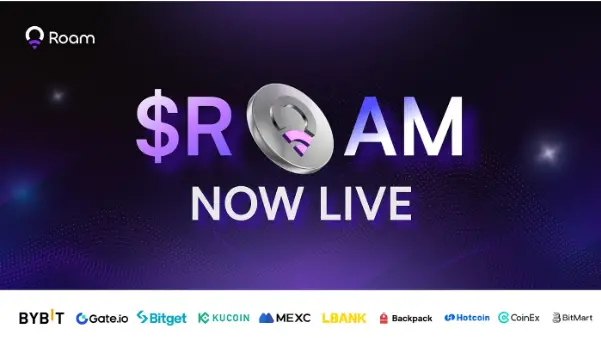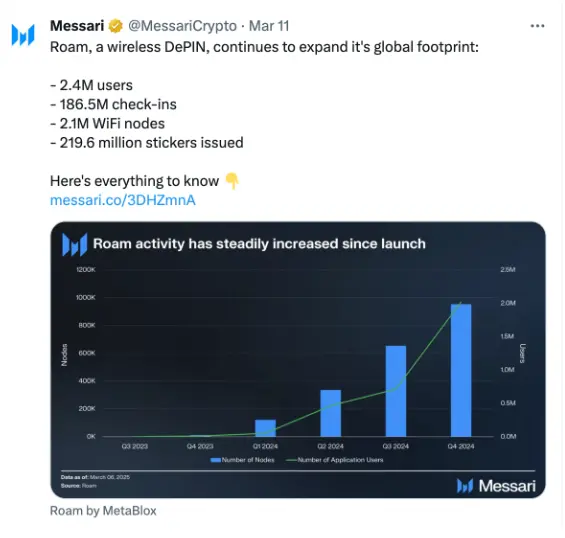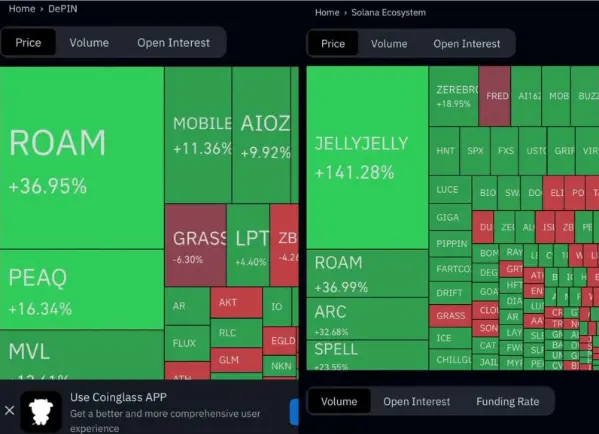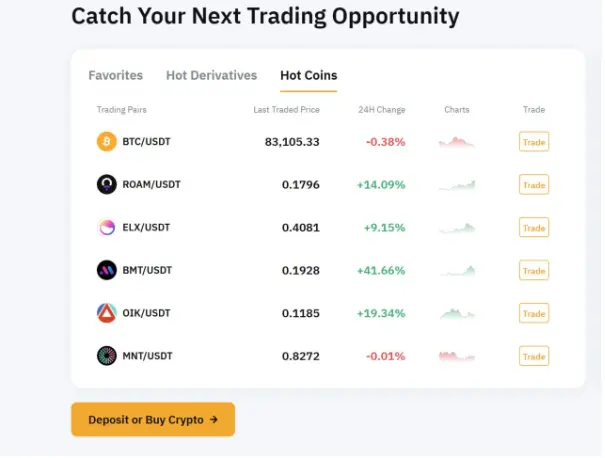
In 2025, the DePIN track is becoming a stronghold for the integration of Web3 and the real world. The "DePIN Annual Report" released by Messari earlier this year revealed several key data points: over 13 million DePIN devices globally serve infrastructure networks daily; although DePIN is still in its early stages, accounting for less than 0.1% of the trillion-dollar terminal market, it has already attracted over $350 million in early financing; in 2024, the "on-chain battle" accelerates, with Solana leading in the network infrastructure field. In this large-scale deployment of global Web3 applications, ROAM stands out with nearly 3 million WiFi nodes and 2.5 million users.
Two months ago, Roam had 1.2 million WiFi nodes, and with over a million nodes, it made its debut in the Messari report, becoming one of the five DePIN projects globally with over a million hardware nodes. Now, the number of nodes has surpassed 3 million, with users reaching 2.5 million and a total of 220 million network check-ins, demonstrating strong growth and an active community. Roam leverages the deep integration of OpenRoaming technology and blockchain DID/VC technology, combined with a business model of free eSIM services and token incentives, to rapidly expand its wireless network business scope and service population, guiding users to seamlessly enter the Web3 ecosystem and gain opportunities for continuous income.
On March 6, the ROAM token was listed on 12 exchanges including Bybit and Bitget, with a trading volume of $120 million on the first day of TGE, ranking first in spot trading on Bybit and Bitget. Roam not only drives the construction of decentralized wireless networks with its technical strength but also shifts from supply-side growth to demand-side exploration through a unique dual-deflationary economic model of points/tokens, driving revenue enhancement. This article will analyze how Roam builds a global open wireless network to support the large-scale deployment of Web3 from three dimensions: application prospects, post-TGE performance, and token economics and future potential.
Application Prospects of ROAM: A Leader in the DePIN Track
Roam is the only Web3 IDP project in the Wireless Broadband Alliance (WBA) OpenRoaming™ enterprise alliance, standing alongside giants like BT, Comcast, Cisco, and Google. Its network covers over 190 countries worldwide, with more than 3 million self-built nodes and over 4 million available OpenRoaming™ WiFi hotspots.
Earlier this year, Roam was included in the Messari annual DePIN status report due to its hardware node count exceeding one million. Recently, Messari released a special report titled Understanding Roam, analyzing Roam. Additionally, Solana's official channels have recommended Roam in two videos. Roam has consistently ranked first in the DePINscan hardware node leaderboard since December 2024, with an increasing gap from the second place. These data not only showcase Roam's strong growth momentum but also validate the core competitiveness of the technology and business model behind the project.

△ On March 11, Messari released the special report Understanding Roam: A Comprehensive Overview
Through DID/VC privacy protection mechanisms, WiFi OpenRoaming security standards, 5G network integration, EAP authentication frameworks, and Trust-Over-IP decentralized identity management, Roam has built a secure, private, and decentralized wireless network service system, ensuring that global users can enjoy seamless and secure network connections while safeguarding their privacy, achieving a true future communication operator model that transcends national borders and different connection methods.
The Roam Discovery platform has partnered with 25 projects, covering fields such as Layer1, PayFi, and AI, providing WiFi node resources, software tools, and community support to help more ecological Web3 applications land. Roam also addresses the data closure issues of traditional operators by ensuring data privacy and circulation through DID/VC and TEE+ZK technologies. As an AI data layer infrastructure, Roam's 3W data (Who, When, Where) + payment/device data breaks down industry data barriers, distinguishing between real and generated data, and improving AI training quality. Furthermore, Roam provides DID identities and OpenRoaming certificates for AI agents, supporting smart home and IoT collaboration, accelerating the era of human-machine symbiosis.
After TGE, the application scenarios for the ROAM token will continue to emerge. Soon, ROAM will be usable in gaming centers (incentivizing player participation) and for direct credit card consumption (enhancing daily practicality), increasing token consumption and user stickiness.
The practicality of ROAM, from short-term consumption scenarios (gaming, credit card payments) to long-term ecological expansion (Web3 collaboration, AI infrastructure), solidifies its leading position in the DePIN track. Its technological and data advantages not only promote global wireless network coverage but also pave the way for the large-scale application of Web3 and AI through open cooperation and data innovation, showcasing comprehensive potential from the supply side to the demand side.
Market Performance After TGE: Potential Signals Amidst Volatility
Roam completed its TGE on March 6, listing on 12 exchanges including Bybit and Bitget, with a trading volume of $120 million on the first day, quickly igniting market enthusiasm. On March 18, ROAM saw a 30% increase in 24 hours, briefly ranking first in DePIN-related spot trading on Bybit and Bitget. CoinGlass data shows that in the early listing phase, ROAM increased by 36.95% in the DePIN track (ranking first), while the Solana ecosystem saw an increase of 36.99% (ranking second), demonstrating its strong appeal in both ecosystems.

△ CoinGlass data shows that in the early listing phase, ROAM increased by 36.95% in the DePIN track (ranking first), while the Solana ecosystem saw an increase of 36.99% (ranking second)
The potential signals of ROAM are also reflected in its staking and liquidity mechanisms. The project has launched a high APY staking plan, with an APY of 50% for ordinary users and up to 200% for mining machine users. In the future, Roam will introduce a sticker acceleration feature to increase staking rewards by an additional 20%-30%, further incentivizing users to lock up tokens and enhance the stability of token value. Additionally, users can participate in a locked traffic activity, with each locking period lasting 28 days. Based on the number of locked tokens, users will receive additional traffic rewards upon expiration: locking 100 ROAM earns 5GB, 200 ROAM earns 12GB, and 500 ROAM earns 30GB. Users can increase their locked tokens at any time to receive more traffic rewards. This design ties the token to actual network usage, enhancing practicality and laying the foundation for reducing circulating supply and alleviating selling pressure.

△ On March 18, ROAM ranked first in DePIN-related spot trading on Bybit and Bitget
The performance of ROAM after TGE contains potential for both short-term activity and long-term growth. The initial trading volume of $120 million and high rankings on Bybit and Bitget demonstrate its market recognition, while the $28.81 million trading volume on March 18 and its top position further reinforce this trend. Compared to the Solana ecosystem (which saw a 4.59% drop on the same day), ROAM's activity and rebound ability are particularly prominent. The combination of high APY staking and locked traffic injects vitality into its ecosystem, indicating a transition from supply-side expansion to demand-side deepening. ROAM's trading resilience, staking potential, and upcoming adjustments to mining rules collectively lay a solid foundation for its continued growth in the DePIN track. In the short term, market enthusiasm and liquidity provide support for ROAM; in the long term, its technology-driven practicality and community participation will be key drivers of value enhancement.
Innovative Design of Token Economics: Dual Deflationary Mechanism of Points and Tokens Driving Scarcity
Roam's total token supply is 1 billion, of which 120 million is allocated to the team (with a 6-year linear unlock), 280 million is allocated to past and future investors (including airdrops), and the remainder is generated through mining. Currently, the circulating supply is 280 million, with an FDV of $180 million, and there is still significant room for growth in staking and locking rates. After TGE, Roam will adjust mining rules to optimize supply management, laying the groundwork for long-term value growth.
The token economics of ROAM is centered around a dual deflationary mechanism of points/tokens, reducing circulating supply through burn pools and reverse burn pools, promoting scarcity and value enhancement. Previously, Roam launched a Pilot burn pool testing mechanism, which received enthusiastic community feedback, destroying a quarter of the total points accumulated over the past year and a half within just over ten days, with stable online participation exceeding 10,000. After TGE, the official burn pool and reverse burn pool further stimulate enthusiasm. The burn pool destroys points: ordinary users earn points by adding WiFi, checking in, and participating in activities, with the upcoming AI interaction also providing point rewards; mining machine users additionally earn points through mining, and the new mining rule adjustments may yield even higher returns. The reverse burn allows users to convert ROAM tokens into points (conversion rates are based on the weighted average of the sticker pool and the general pool, dynamically adjusted), with 97% of the tokens permanently destroyed, directly reducing circulating supply. Pilot burn pool data shows that the point burn ratio for the general pool, sticker pool, and mining pool is 5:3:2, and reverse burning provides arbitrage opportunities for users holding stickers (earned only through check-ins), incentivizing purchases from exchanges and participation.
This dual deflationary design draws on the principle of the "impossible triangle," ensuring the sustainability of the system. The token release curve is similar to Bitcoin's exponential decay: initially releasing 0.6% per month, decreasing to 0.35% after 5 years, 0.2% after 10 years, 0.05% after 20 years, and only 0.001% after 50 years. At the same time, ROAM introduces a difficulty adjustment mechanism that dynamically adjusts the release speed based on network activity (number of check-ins). If activity declines, token release slows down to avoid value collapse; conversely, it increases moderately to eliminate inefficient nodes and enhance the returns of high-value nodes. This mechanism is akin to Bitcoin's hash rate adjustment, ensuring that token value is linked to network health, preventing a death spiral.
The enhancement of practicality further strengthens the stability of the economic model. The number of WiFi nodes has increased from 1.2 million to 3 million, with users reaching 2.5 million, leading to a continuous increase in intrinsic value. The upcoming gaming center and credit card consumption scenarios will increase the demand for ROAM tokens, stimulating circulation consumption. The staking plan offers ordinary users an annualized return of 50%, while mining machine users can receive up to 200%, with the current locked amount at 627,000 ROAM. The soon-to-be-launched acceleration feature will increase returns by 20%-30%, potentially driving the staking rate up to 10% (28 million ROAM), significantly reducing selling pressure.
Roam's economic model is uniquely innovative in the DePIN track. Compared to FIL (with fewer nodes than ROAM and a market cap of $10 billion) and TAO (with a single technology), ROAM's cost-effectiveness and design advantages are prominent. Assuming the future node count reaches 5 million, the burn pool and reverse burn could cumulatively reduce 100 million tokens, with prices potentially breaking through $0.50-$1.00. The dual deflationary mechanism links points and tokens, with mining adjustments tied to network activity, and practical scenarios stimulating demand, collectively transforming potential supply into a scarcity advantage, providing long-term support for Roam's global wireless network ecosystem.
Roam: A Leader in Decentralized Networks
As a pioneer in the DePIN track, Roam is committed to building a decentralized global open wireless network in the long term. Through continuous delivery, it not only promotes the large-scale deployment of crypto applications but also provides critical support for AI development. Roam's core advantage lies in the synergy between technology and economic models: OpenRoaming and DID/VC technologies lay the foundation for a secure and seamless network, while the dual deflationary mechanism of points/tokens and mining adjustments optimize supply management. This transformation from the supply side to the demand side demonstrates Roam's strategic vision in building a distributed ecosystem. It is a technology-driven future layout, and Roam is worth continuous attention.
免责声明:本文章仅代表作者个人观点,不代表本平台的立场和观点。本文章仅供信息分享,不构成对任何人的任何投资建议。用户与作者之间的任何争议,与本平台无关。如网页中刊载的文章或图片涉及侵权,请提供相关的权利证明和身份证明发送邮件到support@aicoin.com,本平台相关工作人员将会进行核查。




